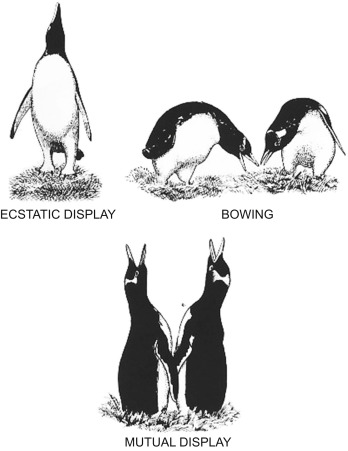
The Dangers of Pseudohistory: An Examination of “The Secret Life of Numbers”
In recent times, there has been an increasing demand among the public for engaging literature on the history of science and mathematics. These stories pledge to highlight neglected figures and provide comprehensible insights into the evolution of scientific concepts. Nevertheless, this marketable passion often carries a significant price: inaccuracies, skewed focus, and the spread of myths presented as historical facts.
A notable example is a recent publication that claims to deliver a “global history of mathematics and its overlooked pioneers” under the catchy title, The Secret Life of Numbers. Upon initial inspection, this book appears to present a fascinating journey through mathematical history: incorporating perspectives from non-European cultures, honoring the achievements of women, and linking scientific thought to wider cultural movements. Regrettably, what unfolds within its pages serves as a sobering reminder of the harm that popular science can inflict when the urge to entertain or provoke overshadows the commitment to foster an accurate understanding.
This article discusses the primary issues with this work — both thematic and factual — and contemplates the broader ramifications of misrepresentation in accessible mathematical histories.
1. Altering Facts to Fit a Contemporary Narrative
A recurring flaw in the book is its inclination to manipulate facts to match a contemporary perspective or agenda, rather than portraying the intricacies of historical reality. A glaring instance occurs early on, where it misrepresents the Newton-Leibniz calculus debate by attributing the development of calculus to the medieval Kerala School in southern India. While the mathematicians of the Kerala School certainly made significant and groundbreaking contributions — especially regarding infinite series — merging their accomplishments with the formalism of 17th-century calculus obscures rather than clarifies history.
These sweeping assertions reflect not a careful approach to historiography but an unbridled ambition to equalize the historical narrative without subtlety. The outcome is not empowerment through historical comprehension but the fabrication of new pseudo-histories.
2. Fabricated Collaborations and Exaggerated Contributions
Another concerning aspect is the romanticization or outright fabrication of collaborations and roles in historical scientific achievements. The portrayal of the Brahe siblings — Tycho and Sophia — as equal astronomers working in tandem to unveil Mars’ orbital mysteries is a fabrication not supported by historical documentation. While Sophia Brahe was undoubtedly a gifted intellectual in her own right, her contributions to astronomy were secondary compared to her brother’s systematic observations and model development.
Overlooking this discrepancy does a disservice to Sophia’s legacy and reveals a deeper misunderstanding of how historical documentation and contributions ought to be evaluated and contextualized within the historical framework.
3. Oversimplifying Groundbreaking Developments
Another repeated flaw is the oversimplification of pivotal scientific breakthroughs. Isaac Newton’s Principia Mathematica is universally acknowledged as one of the most significant scientific texts ever composed. However, contrary to popular belief — as reiterated by the authors — Newton did not employ calculus in the Principia. Instead, he predominantly utilized classical geometric proofs in line with the intellectual standards of his era. Presenting his overarching use of calculus in this setting is not merely a minor error — it fundamentally distorts how mathematical methods emerged and were substantiated.
The authors maintain this tendency by presenting the formulation of Newton’s three laws of motion as standalone revelations, when in fact Newton drew upon the work of intellectual giants such as Descartes, Galileo, and Huygens. This glorified portrayal of Newton as an intellectual isolate overshadows the vibrant, transnational milieu of scientific advancement during the seventeenth century.
4. Misguided Emphasis on Astronomy in a Mathematics Text
Although ostensibly a book focusing on mathematical history, extensive passages are allocated to astronomical advancements — often at the expense of essential mathematical progressions. Historical astronomy undoubtedly intersected with mathematical growth, particularly in the advancement of trigonometry and the quantification of planetary movement. However, here, the discourse veers excessively into detailed astronomy while neglecting to showcase the rich trove of mathematical discoveries in the 18th and 19th centuries.
Where are the comprehensive studies of Carl Friedrich Gauss’s arithmetic research? The progress in mathematical analysis? The explosive expansion of algebra and number theory throughout Europe? Time after time, significant mathematical advancements are pushed aside in favor of narratives with broader public appeal.
5. Misrepresenting Non-European Mathematical Traditions
The book’s emphasis on Chinese and Arabic mathematical traditions is commendable in its intention — yet problematic in its execution. Instead of providing rigorous and well-founded accounts of non-European breakthroughs, the authors frequently depend on scant or misinterpreted evidence to exaggerate the importance of certain ideas or prematurely link them to contemporary mathematical concepts.
For instance, portraying Thābit ibn Qurra, a 9th-century polymath, as having suggested elliptical orbits — a claim largely absent from trustworthy historical sources — weakens genuine attempts to value and comprehend the vast scientific knowledge from the Islamic Golden Age.
6. Tokenism Over